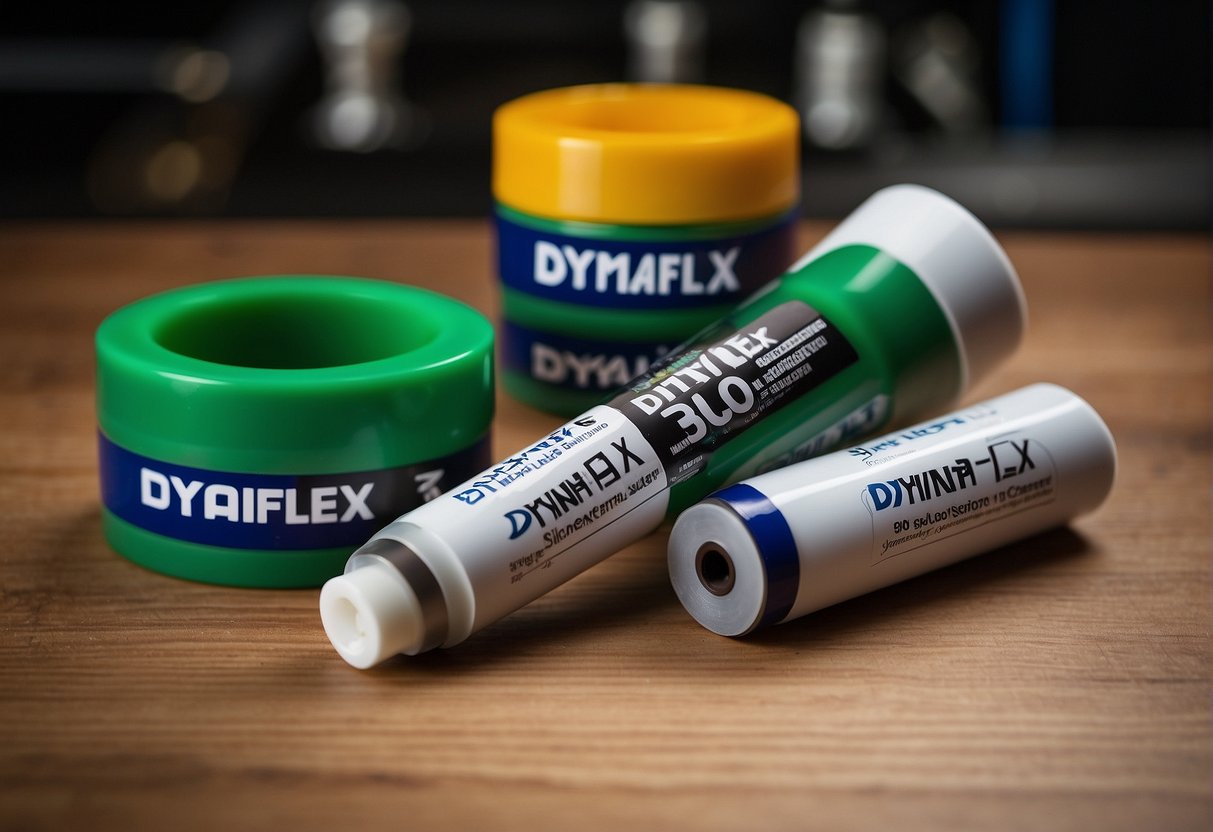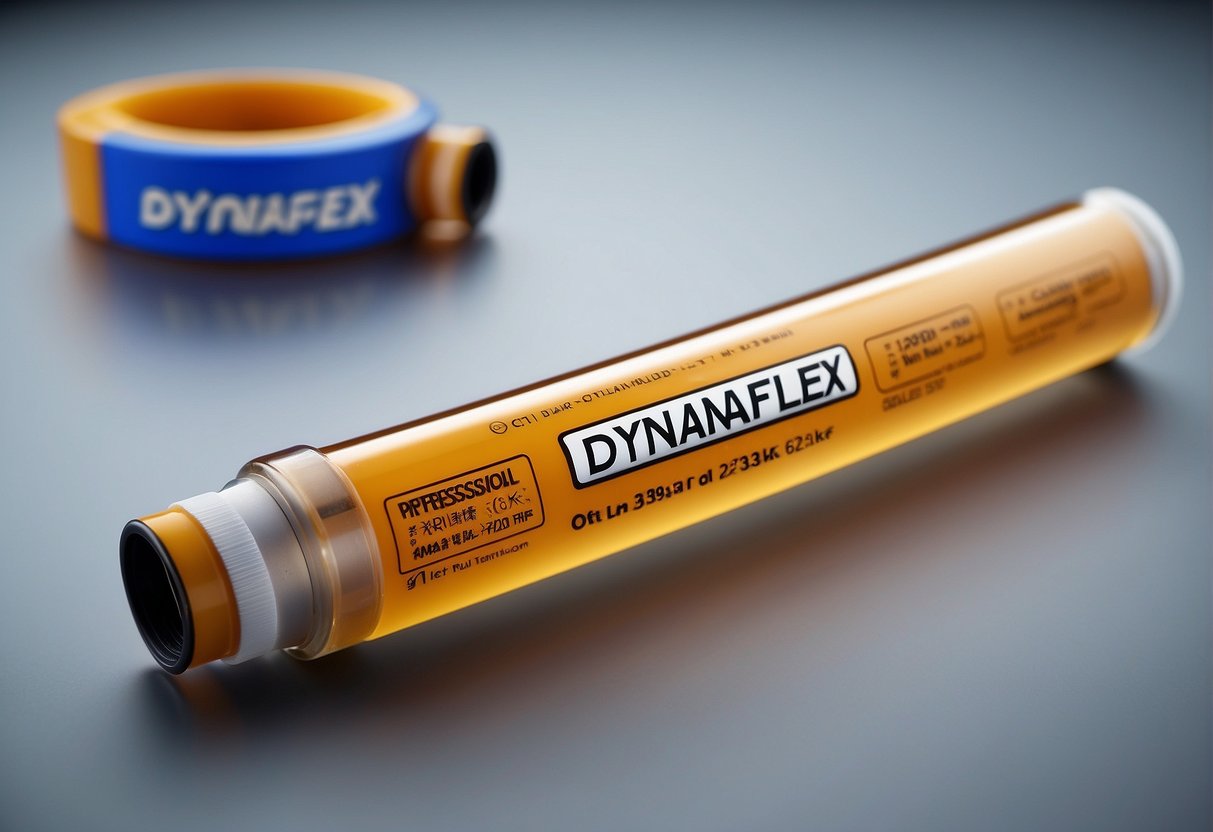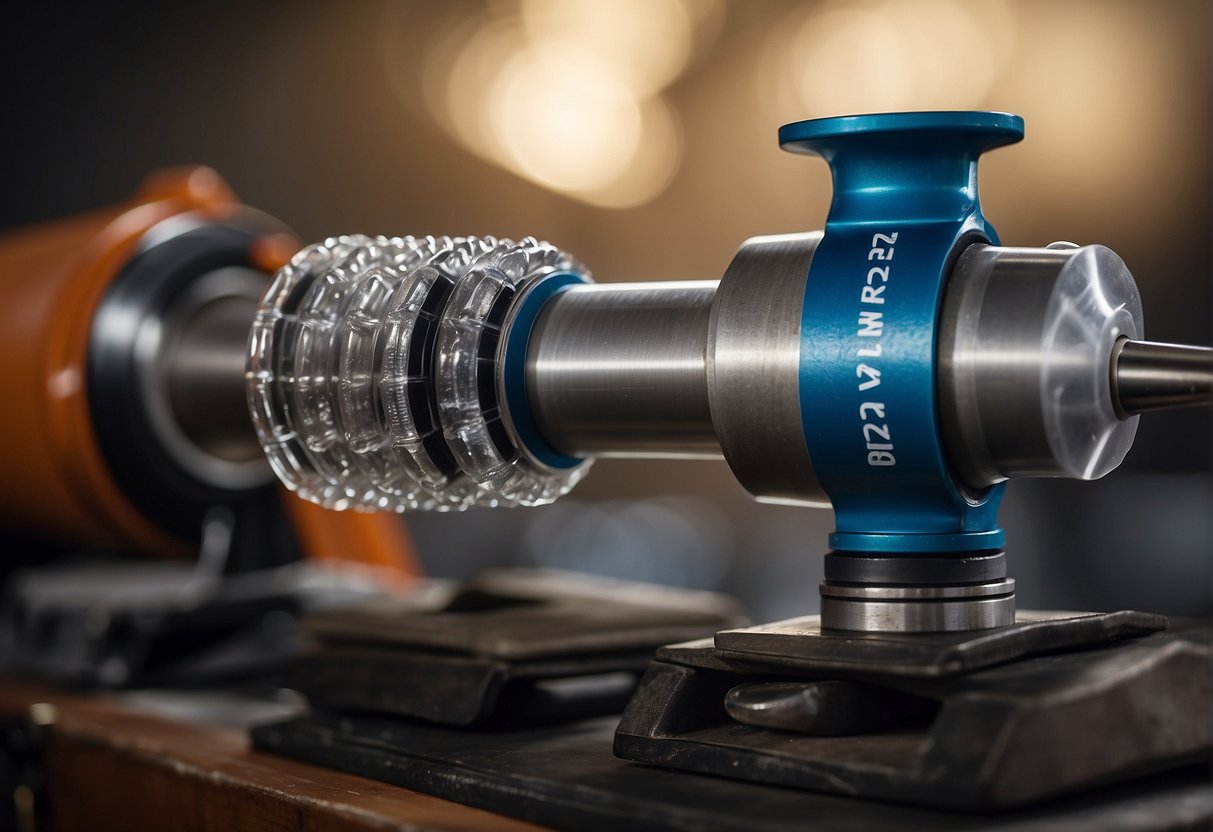When it comes to sealing and caulking, there are a variety of products available on the market. Two popular options are Dynaflex 230 and silicone sealant. Both products offer unique benefits and have different features that make them suitable for different applications. In this article, I will compare Dynaflex 230 vs silicone to help you determine which product is right for your project.
Dynaflex 230 is a premium elastomeric sealant that offers outstanding performance against the elements. It is a latex-based sealant that is suitable for both indoor and outdoor use. Dynaflex 230 is known for its flexibility and crack-proof performance, which means it can endure expansion and contraction without cracking or losing its seal. On the other hand, silicone sealant is a premium all-purpose sealant that offers maximum flexibility. It is also known for its durability and can withstand extreme temperatures and harsh weather conditions.
Key Takeaways
- Dynaflex 230 is a latex-based sealant suitable for both indoor and outdoor use, known for its flexibility and crack-proof performance.
- Silicone sealant is a premium all-purpose sealant that offers maximum flexibility and is known for its durability and ability to withstand extreme temperatures and harsh weather conditions.
- The choice between Dynaflex 230 and silicone sealant depends on the specific needs of your project, including aesthetic and practical considerations, suitability for different surfaces and environments, and health, safety, and environmental impact.
Overview of Dynaflex 230 and Silicone
As a professional handyman, I have used both Dynaflex 230 and silicone sealants in various projects. In this section, I will provide an overview of Dynaflex 230 and silicone, highlighting their composition, chemical properties, primary uses, and applications.
Composition and Chemical Properties
Dynaflex 230 is a water-based acrylic latex caulk that contains no silicone. It is a premium elastomeric sealant that is paintable and can be used for both indoor and outdoor applications. Dynaflex 230 is known for its excellent durability, flexibility, and adhesion. It can be used to seal joints up to 2 inches wide and is resistant to weathering and UV rays.
On the other hand, silicone sealants are made from silicone polymers. They are either pure silicone or silicone-based, which means they contain other additives such as latex or acrylic. Silicone sealants are known for their excellent water resistance, flexibility, and durability. They are also resistant to temperature changes and UV rays.
Primary Uses and Applications
Dynaflex 230 is commonly used in construction, plumbing, and electrical projects. It is ideal for sealing gaps around windows, doors, and baseboards. It can also be used to fill gaps in concrete, brick, and stucco. Dynaflex 230 is suitable for both indoor and outdoor use and can be painted over once it has cured.
Silicone sealants are also widely used in construction, plumbing, and electrical projects. They are ideal for sealing gaps around windows, doors, and bathtubs. Silicone sealants are also used to seal aquariums, swimming pools, and other water features. Pure silicone sealants are suitable for both indoor and outdoor use, while silicone-based sealants are recommended for indoor use only.
In conclusion, both Dynaflex 230 and silicone sealants have their unique features and applications. Choosing the right sealant depends on the specific needs of your project. If you need a paintable sealant that can be used for both indoor and outdoor applications, Dynaflex 230 is a great choice. If you need a sealant that is highly water-resistant and can withstand temperature changes, silicone sealants are the way to go.
Performance and Durability
When it comes to comparing Dynaflex 230 and silicone sealants, one of the most important factors to consider is their performance and durability. In this section, I will compare the two sealants based on their adhesion, flexibility, weather and water resistance, UV resistance, and temperature resistance.
Adhesion and Flexibility
Both Dynaflex 230 and silicone sealants have excellent adhesion properties. They can bond to a wide range of surfaces, including wood, metal, concrete, and plastic. However, silicone sealants have better flexibility than Dynaflex 230. They can withstand more movement without cracking or breaking. This makes silicone sealants ideal for sealing joints and gaps that are prone to movement, such as those found in windows and doors.
Weather and Water Resistance
Both Dynaflex 230 and silicone sealants are waterproof and can withstand exposure to water without losing their adhesion properties. However, silicone sealants have better weather resistance than Dynaflex 230. They can withstand extreme temperatures, both hot and cold, and are resistant to UV rays. This makes silicone sealants ideal for outdoor applications, such as sealing roofs, gutters, and siding.
Temperature and UV Resistance
Dynaflex 230 can withstand temperatures ranging from -20°F to 160°F, while silicone sealants can withstand temperatures ranging from -65°F to 400°F. This makes silicone sealants more suitable for extreme temperature conditions. Additionally, silicone sealants are resistant to UV rays, which can cause other sealants to deteriorate over time.
In conclusion, both Dynaflex 230 and silicone sealants have their strengths and weaknesses when it comes to performance and durability. While Dynaflex 230 is a good all-purpose sealant, silicone sealants are better suited for outdoor applications and extreme temperature conditions. It is important to consider the specific application when choosing between the two sealants.
Aesthetic and Practical Considerations
When choosing between Dynaflex 230 and silicone, it is important to consider both aesthetic and practical factors. Here are some considerations to keep in mind:
Paintability and Color Options
Dynaflex 230 is paintable in just 2 hours after application, making it a great option for those who want to quickly finish their project. Additionally, Dynaflex 230 comes in a range of colors, including white, almond, clear, gray, clay, brown, black, cedar tan, and bronze. This variety of colors makes it easy to match the sealant to the surrounding materials, providing a seamless look.
Silicone, on the other hand, is not paintable and comes in fewer color options. While there are some colored silicone sealants available, they are not as widely available as those for Dynaflex 230. However, if a clear sealant is desired, silicone may be the better option as it dries clear and does not yellow over time.
Ease of Application and Maintenance
Both Dynaflex 230 and silicone are easy to apply, but Dynaflex 230 is known for being particularly easy to tool. This means that it is easy to shape and smooth the sealant after application, resulting in a clean and professional finish. Additionally, Dynaflex 230 is easy to clean up with just soap and water.
Silicone, while still easy to apply, can be more difficult to tool due to its inherent stickiness. It also requires a special solvent for cleanup, which can be more difficult to find than soap and water.
Overall, when considering the aesthetic and practical factors, Dynaflex 230 may be the better option for those who want a paintable sealant with a range of color options and easy application and cleanup. However, if a clear sealant is desired, silicone may be the better option despite its more difficult cleanup process.
Suitability for Different Surfaces and Environments
When it comes to selecting a sealant, it is important to consider the surfaces and environments where it will be used. In this section, I will discuss the suitability of Dynaflex 230 vs silicone for different surfaces and environments.
Indoor vs Outdoor Use
Both Dynaflex 230 and silicone are suitable for both indoor and outdoor use. However, Dynaflex 230 is a latex-based sealant which makes it more suitable for indoor use. It is paintable and has a low odor, making it ideal for use in enclosed spaces such as kitchens and bathrooms. On the other hand, silicone is more suitable for outdoor use due to its waterproof and weatherproof properties. It is ideal for sealing windows and doors to prevent water from seeping in.
Compatibility with Various Materials
Dynaflex 230 and silicone are compatible with a wide range of materials, including wood, metal, vinyl, concrete, glass, brick, and ceramic. However, Dynaflex 230 is not recommended for use on some plastics, such as polycarbonate and acrylic. In contrast, silicone is compatible with most plastics, making it a better option for sealing window frames and baseboards.
When it comes to siding and trim, Dynaflex 230 is a better option for exterior siding, while silicone is better for trim. Dynaflex 230 adheres well to wood and vinyl siding, while silicone is more suitable for sealing gaps in trim and molding.
In summary, both Dynaflex 230 and silicone are versatile sealants that can be used on a wide range of surfaces. However, it is important to consider the specific materials and environments where they will be used to ensure the best results.
Health, Safety, and Environmental Impact
When comparing Dynaflex 230 and silicone, it’s important to consider their health, safety, and environmental impact. Here are some key factors to keep in mind:
Mold, Mildew, and Odor Considerations
Both Dynaflex 230 and silicone are low odor sealants, which makes them ideal for indoor use. However, it’s important to note that neither of these sealants are specifically formulated to prevent mold or mildew growth. If you’re concerned about mold and mildew, it’s important to take steps to control the humidity levels in your home and ensure that surfaces are properly cleaned and dried before applying sealant.
Environmental Exposure and Building Materials
Dynaflex 230 and silicone are both designed to withstand exposure to the elements, making them suitable for use on a variety of building materials. However, it’s important to note that silicone may be more resistant to UV rays and extreme temperatures than Dynaflex 230. Additionally, silicone is generally considered to be more environmentally friendly than Dynaflex 230, as it is less likely to release harmful chemicals into the air or water.
When it comes to choosing between Dynaflex 230 and silicone, it’s important to consider your specific needs and priorities. If you’re looking for a sealant that is low odor and suitable for indoor use, both Dynaflex 230 and silicone are good options. However, if you’re concerned about environmental impact or need a sealant that can withstand extreme temperatures and UV exposure, silicone may be the better choice.
Frequently Asked Questions
What are the advantages of using DynaFlex 230 over traditional silicone caulks?
DynaFlex 230 has several advantages over traditional silicone caulks. Firstly, it is paintable, which means it can be easily painted over to match the surrounding surfaces. Secondly, it is more flexible than silicone, which makes it ideal for use on surfaces that are prone to expansion and contraction. Finally, DynaFlex 230 has excellent adhesion properties, which means it can be used on a wide range of surfaces, including wood, brick, concrete, and metal.
Can DynaFlex 230 be used on aluminum surfaces effectively?
Yes, DynaFlex 230 can be used on aluminum surfaces effectively. However, it is important to note that aluminum surfaces should be cleaned and primed before applying DynaFlex 230. This will ensure that the sealant adheres properly and provides a long-lasting seal.
Is DynaFlex Ultra a superior option compared to GE silicone for outdoor applications?
DynaFlex Ultra and GE silicone are both excellent options for outdoor applications. However, DynaFlex Ultra has several advantages over GE silicone. Firstly, it is more flexible, which makes it ideal for use on surfaces that are prone to expansion and contraction. Secondly, it has excellent adhesion properties, which means it can be used on a wide range of surfaces, including wood, brick, concrete, and metal. Finally, DynaFlex Ultra is paintable, which means it can be easily painted over to match the surrounding surfaces.
What are the key differences between DynaFlex 230 and DynaFlex Ultra?
DynaFlex 230 and DynaFlex Ultra are both excellent sealants, but they have some key differences. Firstly, DynaFlex Ultra is more flexible than DynaFlex 230, which makes it ideal for use on surfaces that are prone to expansion and contraction. Secondly, DynaFlex Ultra has excellent adhesion properties, which means it can be used on a wide range of surfaces, including wood, brick, concrete, and metal. Finally, DynaFlex Ultra is paintable, which means it can be easily painted over to match the surrounding surfaces.
How does DAP compare to GE silicone in terms of durability and performance?
DAP and GE silicone are both excellent sealants, but they have some key differences in terms of durability and performance. Firstly, DAP has excellent adhesion properties, which means it can be used on a wide range of surfaces, including wood, brick, concrete, and metal. Secondly, DAP is more flexible than GE silicone, which makes it ideal for use on surfaces that are prone to expansion and contraction. Finally, DAP is paintable, which means it can be easily painted over to match the surrounding surfaces.
Is it possible to paint over DynaFlex 230, and does it yield a professional finish?
Yes, it is possible to paint over DynaFlex 230, and it yields a professional finish. However, it is important to note that the sealant should be allowed to dry completely before painting. Additionally, the surface should be cleaned and primed before painting to ensure that the paint adheres properly.

Hi, I’m Sal Muller of Tooltrip.com. My DIY experience led me to understand essential power tools for home projects. Tooltrip.com guides enthusiasts and professionals in choosing right tools for any job. I provide concise top tool reviews for easier, efficient DIY.






